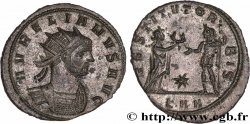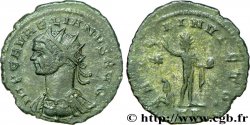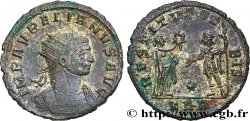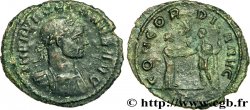brm_473371 - AURELIAN Aurelianus
Not available.
Item sold on our e-shop (2019)
Price : 125.00 €
Item sold on our e-shop (2019)
Price : 125.00 €
Type : Aurelianus
Date: novembre 274 - septembre 275
Date: 274-275
Mint name / Town : Serdica
Metal : billon
Millesimal fineness : 50 ‰
Diameter : 22 mm
Orientation dies : 6 h.
Weight : 3,50 g.
Officine: 4e
Coments on the condition:
Magnifique exemplaire idéalement centré au droit. Buste remarquable et beau revers malgré un léger décentrage. Patine grise
Catalogue references :
Obverse
Obverse legend : AVRELIANVS AVG.
Obverse description : Buste radié et cuirassé d’Aurélien à droite, vu de trois quarts en avant (B).
Obverse translation : “Aurelianus Augustus”, (Aurélien auguste).
Reverse
Reverse legend : RESTITVT OR-BIS/ *// KA.
Reverse description : Pax (La Paix) (?) drapée, debout à droite, tendant une couronne de la main droite à Aurélien lauré, en habit militaire, debout à gauche, tendant la main droite et tenant une haste de la main gauche.
Reverse legend : D.
Reverse translation : “Restitutor Orbis”, (Le Restaurateur du Monde).








 Report a mistake
Report a mistake Print the page
Print the page Share my selection
Share my selection Ask a question
Ask a question Consign / sell
Consign / sell
 Full data
Full data



